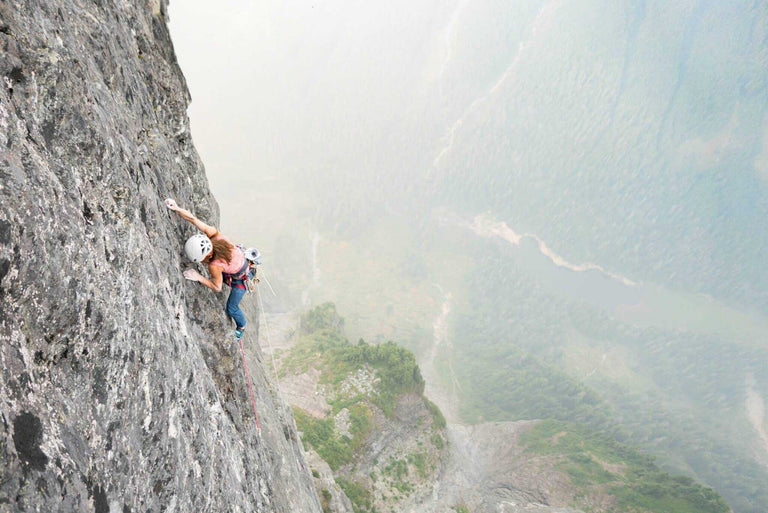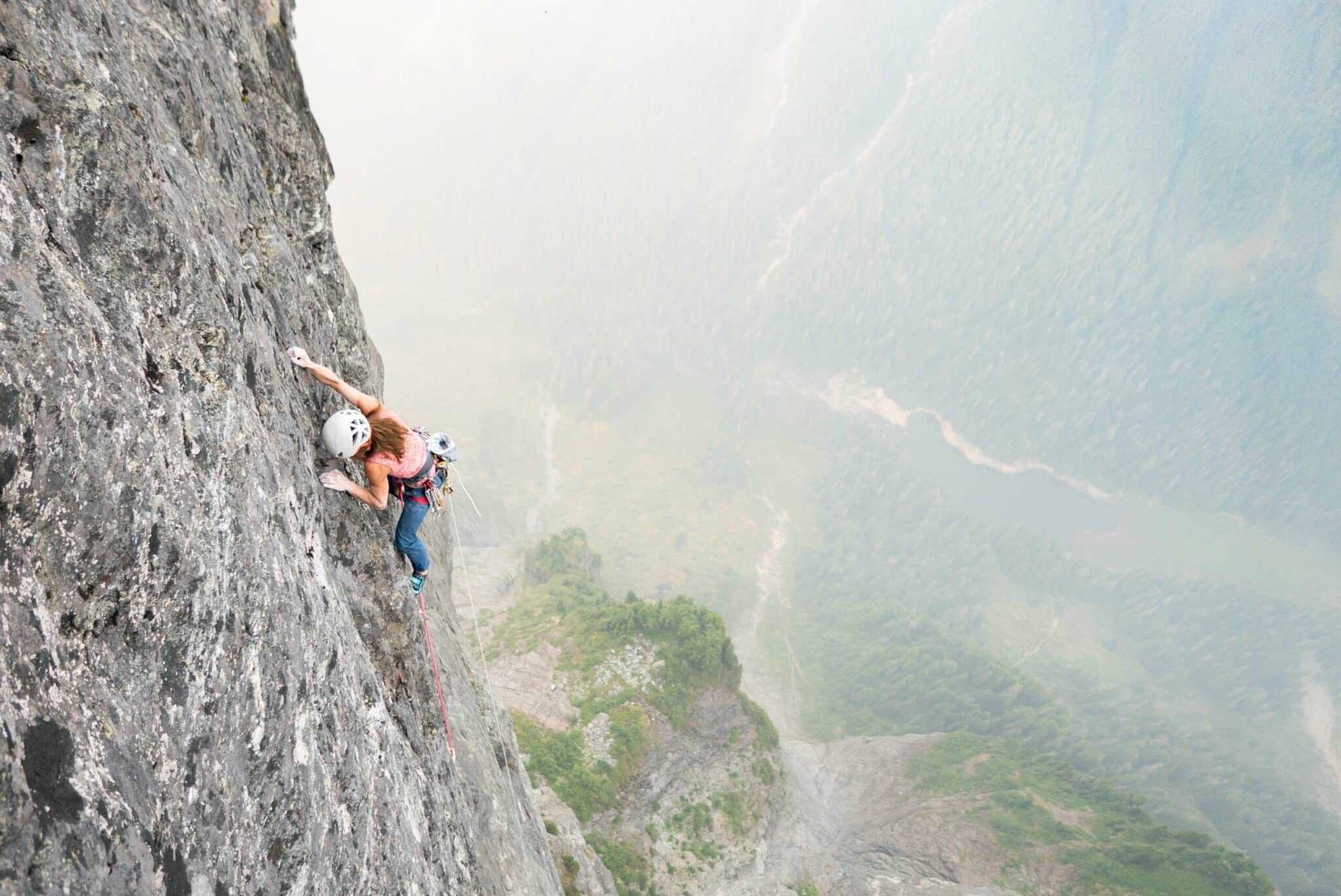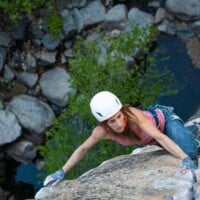I once existed most beautifully between the moment when I pulled onto a particular rock climb and the moment in which, for the only time, I did not fall off.
It was my first real climbing project and I was enraptured by what it was giving me. The process altered the view of my own possibilities, lengthened the horizon upon which I now gaze.
Still, when the dust of my eventual success settled, my priorities were left in a harsh light for me to examine. Due to my neglect, a good relationship that brought me joy stagnated and ultimately failed. While I nurtured an incredibly enriching and life-long friendship with my climbing partner, I strayed away from others and lost valuable work and life experiences.
Upon reflection, it became simple to realize that the positive outcome was so rewarding because it was never guaranteed. It is a rule true in any field: The larger the investment and risk, the greater the payoff. For me, this payoff came in the form of strong and profound feelings of flow resulting from the connection between mind and body the route demanded of me to succeed. I familiarized myself with great enthusiasm and devotion, I liked the way it made me climb, and I even liked the way it made me live.

Equally, when you strip away the nuances of a sport – of running your fastest, lifting your heaviest, or climbing your hardest – you will be left with what makes a project incredibly difficult, and incredibly special.
There is an inherent risk that your aspirations may not align with your abilities or your opportunities. You will, consequently, expose yourself to failure and vulnerability. When it does not work out, the ensuing sting can weave its way straight to your core, a part of which is normally guarded during the pursuit of goals in which success is highly likely.
Though I have never regretted a project, I have become more intelligent about respecting one’s complexity. Each and every time, I learn that the mental approach I take before I pull onto the wall is as important as the climbing itself.
The advice presented here is geared toward the more rare, large projects which demand a significant investment of time and sacrifice. These words can be applied for a project of any type, and in many sports:
1. Explore your motivation and write it down
If you think you have found a goal, the first steps should occur in the mind, not the body. Ask yourself if your drive is intrinsic – guided by personal inspiration – or extrinsic – guided by the ego seeking approval or looking to show-off.
There is nothing wrong with saying “I want to climb 5.13a” or “ I want to run a sub 3-hour marathon.” It is ideal, though, if these criteria are not immutable, dynamic if certain “must-have” attributes of a goal are not met. We all think about and focus on grades, particularly if it is a “benchmark accomplishment” of the sport. Still, consider that you will learn more and be more motivated to stick with the projects in which inspiration is independent of anything but yourself.
When I try to find a climbing project, I have a grade range in which I focus to get me started, aware that in climbing, grades vary wildly based on region and style. Still, my principal concern is with the movement and aesthetics of the route. If neither of those are satisfied, I will move on.
2. Focus on the process rather than the outcome
Even if your motivation is intrinsic and not based on external factors, it’s easy to focus on crossing the finish line. Being fixated on the result can not only lead to burn out, but shifts focus to a place in which valuable learning experiences are lost. In fact, I find it is the process of projecting, rather than the end-result, in which I gain the most.
When I went to Washington to try a hard multi-pitch, I was not sure I would succeed. Little of the season was left, and the project was committing in many ways. What compelled me to try was that I was genuinely excited for the opportunity to be exposed to new multi-pitch tactics. I also wanted to explore a potential climbing partnership. I never deluded myself into thinking I did not want to send, but opened myself up to learning and so was extremely attentive in the process, making my days out more complex and meaningful.

3. Always have mini goals
A road map from A to Z without intermediate steps is extremely daunting. Break down the big goal into reasonable mini goals and celebrate when you achieve them. Whether it’s a high point on a route or a personal record on a training run, these accomplishments can go unnoticed without explicit attention, but are very useful in fostering confidence. If you struggle to achieve these small goals, you will realize you bit off much more than you can chew before you are extremely invested. Finally, if you ultimately do not make it to the end, you will have proof of how far you really did come.
4. If you regress, reasses
Extreme fatigue, low points, or not achieving milestones that were once consistent are all causes to reassess your strategy. When I began to regress on an early project, I walked away for a few weeks and climbed easier routes of a different style. Though I was afraid I would lose route-specific fitness, I returned fresher both physically and mentally. I was clearly over-trained and fatigued. If you keep a journal during your training and projecting process, you’ll be able to look back and figure out the root cause of your regression.

5. Reflect
Some thrive with a big goal, others find the process overwhelming and not worth the investment of energy. Luckily, we do not need to truly concern ourselves with why we like or dislike something. There is no reason to pursue large goals if you find smaller ones more satisfying. Despite the pressure to project (at least in climbing), the size of the goal does not correlate at all with your abilities.
Maintain longevity in your projecting
Projecting helped define my relationship with climbing. It helped me learn about what I wanted, and exposed attributes of my personality – good and bad – I was unaware existed. As a result, I am more confident about my needs and desires, and am more okay with doing less to achieve more. My decision to design my life around climbing was born from these experiences.
Though projecting has shown me what I am capable of doing, it has also made stark how hard I need to work to find success in some of my life-list routes.
I don’t think, though, that not achieving what was a lofty aspiration must bring with it chronic feelings of disappointment and self-deprecation. . Ask yourself what is wrong with wanting lofty aspirations? I have always thought that the distance between what I can do and what I imagine I can do is not suggestive of failure, but rather of courage and daring.
Pay attention to the goals or activities where your focus and motivation naturally take your energy, and do them. I have found this to be the absolute best method for success, happiness and longevity.
This piece is formatted for Gnarly’s blog from a longer version of climbing-specific projecting tips, which can be found on Jasna’s personal website here.




